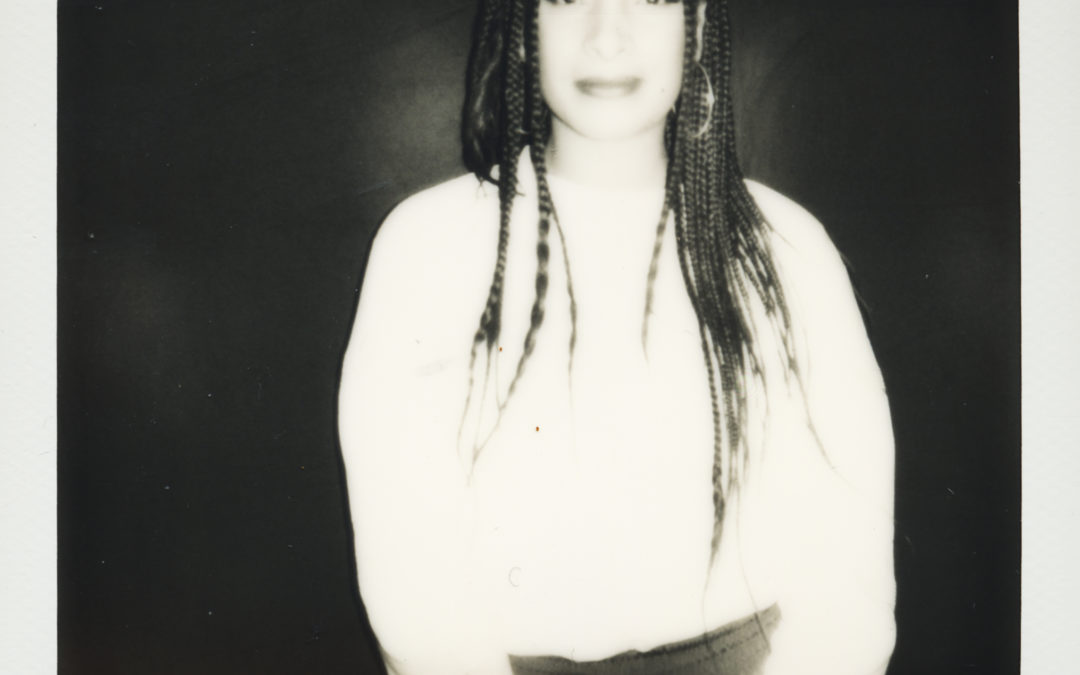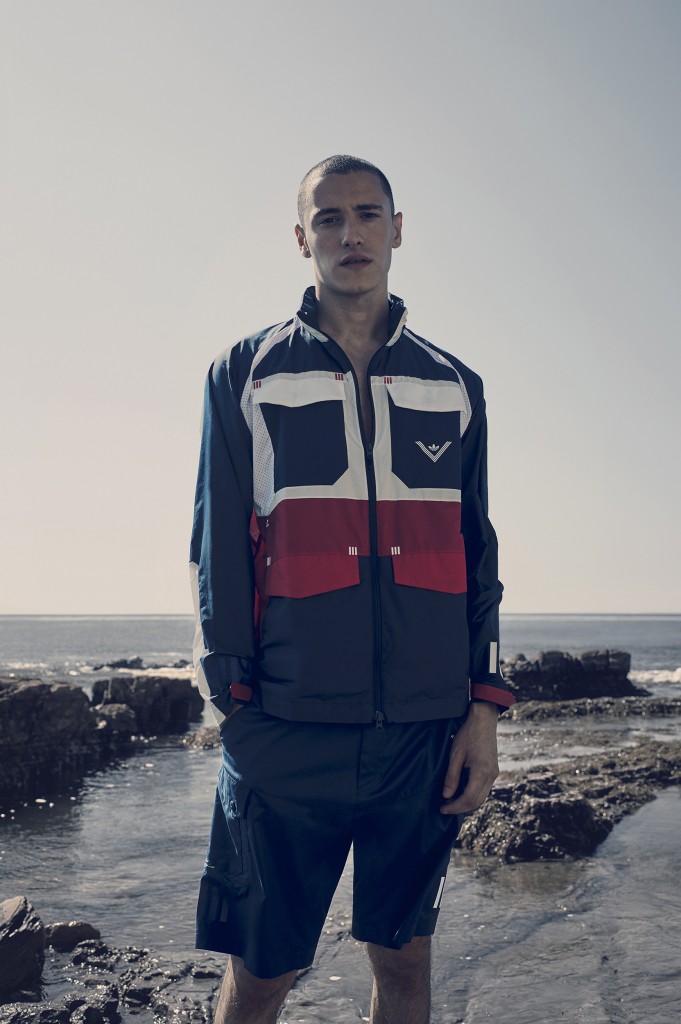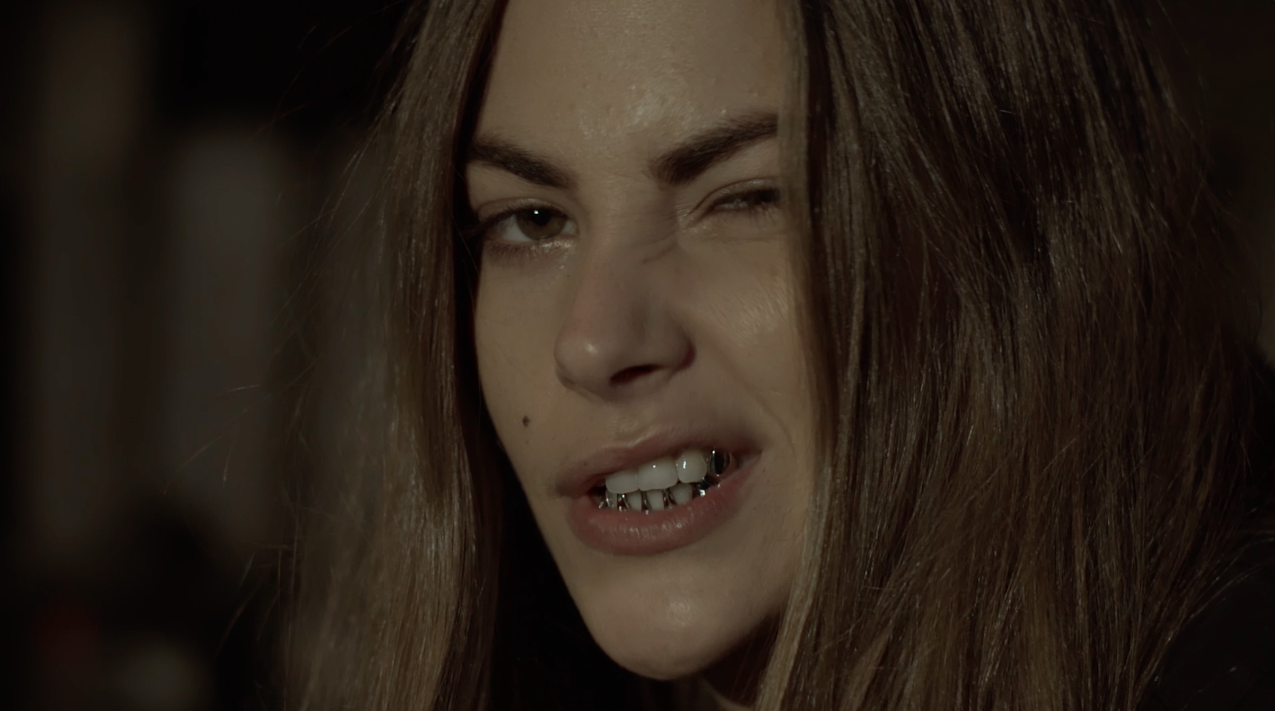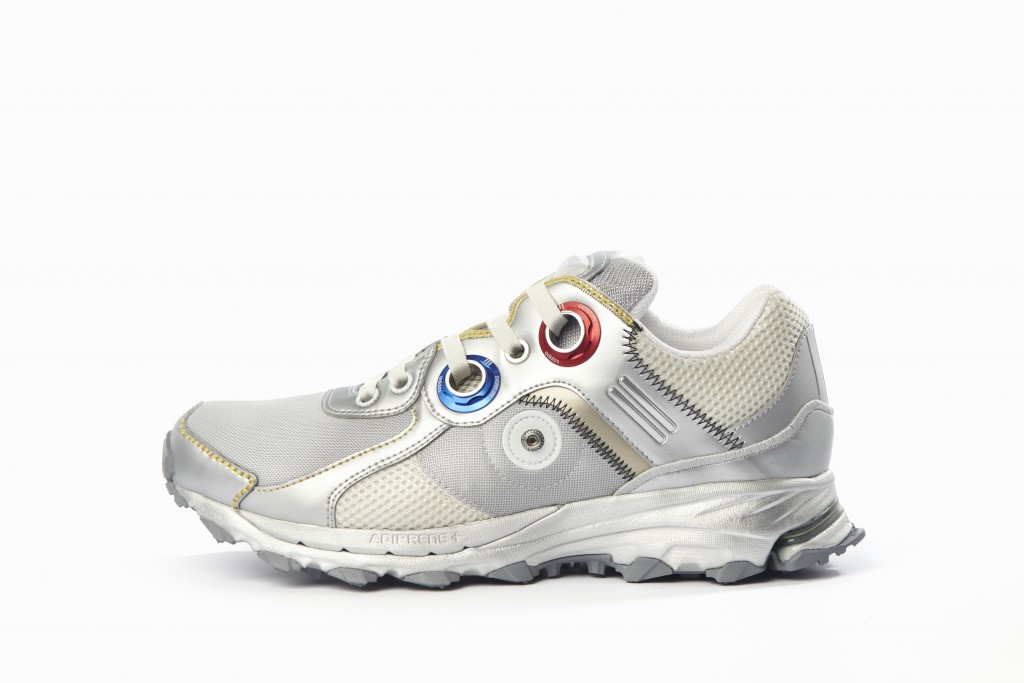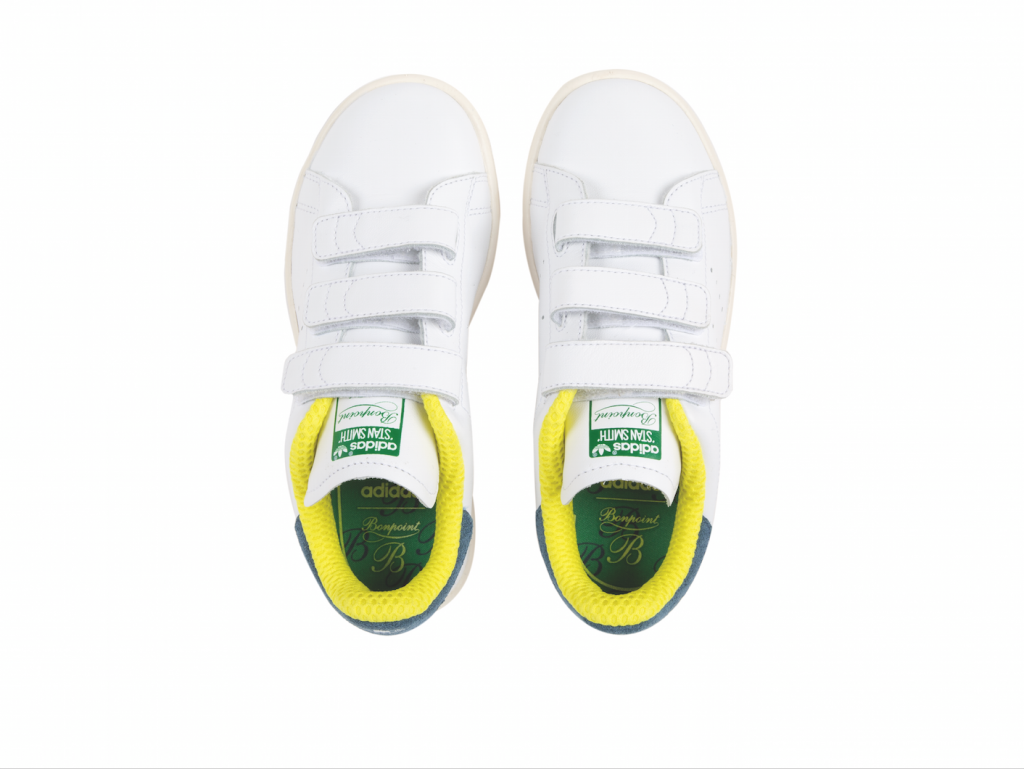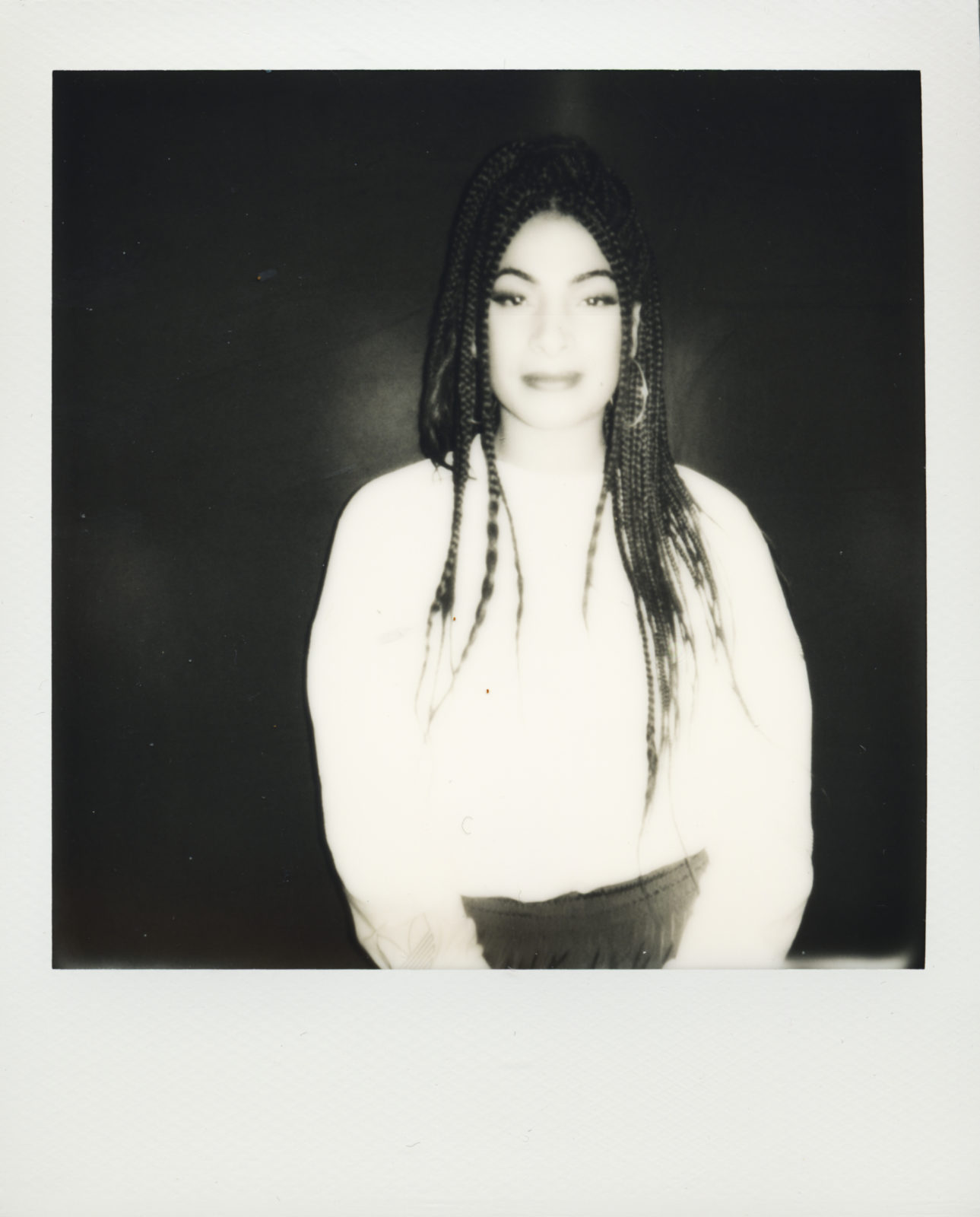
Sponsored by Polaroid Originals
A MEETING WITH PRIYA AHLUWALIA
By Alice Butterlin
Adidas hosted its « Makerlab Presents: Here to create » show during Paris fashion week, as a way to support three young designers who were given the opportunity to present their collections and customize a new Adidas sneaker: the SC Premiere. Priya Ahluwalia was one of these lucky few and got to spend a week in Paris, working with local artisans, designing and learning new crafts. We met up with the rising star whose eco-conscious fashion is turning heads.
First of all, can you tell me about your background? How did you get started in fashion?
I was born in South west London and have lived here all of my life. I had always been interested in clothes as a child and read through all of my mum’s magazines. My real interest in it as a career began when I did textiles at secondary school, I had a great teacher who was really encouraging. From about 14 I knew I wanted to be a fashion designer.
When did you start understanding what direction you wanted to take with your collections? Was there a defining moment while in school?
I think the defining moment was in the second year of my masters when my research into the second-hand clothing industry really began. Thats what really kicked off my interest in different ways of sourcing materials. In terms of aesthetics, I think this is something that has developed over time. My Indian-Nigerian heritage and living in London has really shaped my aesthetic in a lot of ways. For example, I was inspired by men in both Lagos and Delhi. The confidence of the street traders in Lagos that paraded up and down the motorways was beautiful. I also loved the way they actually styled garments together.
I wanted to design graphic knit pieces that were inspired by the knitted vests worn by many Indian men I saw in India, whatever the weather. I also saw so many stripes in India and this was also important to show in the collection, many pieces have simple colour varying stripes, whilst others are actually two various “key garments” cut into stripes and put back together. When I was developing the collection the smells and sounds of Lagos and Delhi were never far from my mind, I think it comes out in the collection in a way that can’t be described.
You won the H&M Design Award this year. What did it change for you on a personal and professional level?
On a personal level, winning the H&M Design award was amazing for my confidence and belief in myself. I have interned, worked and studied for a long time now and the recognition was absolutely amazing. It made me feel very proud. On a professional note, it has enabled me to really start to build by business and put processes and infrastructure in place. It has also allowed me to network and meet amazing people in the press and buyers from stores.
You make a point of using vintage clothes and fabrics and your collections. When did you start recycling as a way of creating?
Whilst I was in Nigeria visiting family I began to notice lots of vendors wearing obscure British clothing for example, a London marathon t-shirt. I stopped to ask one guy where he got it from and how he got it. He explained it was from a market in Lagos that specialized in selling second-hand clothing from “first world” countries like England and the USA. This is when I found out that lots of clothes donated to charity in the west is actually sold for profit to developing countries. I did more research and found out that Panipat is the global recycling capital for second hand clothing. I decided to visit so me and my nanny flew to Delhi and stayed with relatives in Noida. I found out that India has banned the resale of second hand clothing for anything other that recycling, to ensure the preservation of traditional Indian textiles. Both trips inspired the collection from aesthetics to sourcing.
All of this shocked me in a number of ways. Firstly, I couldn’t believe that second-hand clothing was such a big business. I was also completely shocked at the sheer amount of clothes that are discarded, I had never really thought about it properly before. I suppose it is easy to ignore something that you don’t really see, when we throw things away we don’t have to see the disposal through to the end. It also really made me cherish craft and tradition in textiles.
Many young designers stress the importance of eco-fashion like Marine Serre and Botter. Do you think it is vital to rethink our ways of producing clothes?
I think it is important for everyone in all stages of a clothes life cycle to think about this. I don’t think the focus should only be on designers. Manufacturers of textiles, factories, retailers and consumers all have a part to play. We have so much knowledge on the impact of the clothing industry on the planet and I really think it is hard to ignore.
Recycling existing clothes means your pieces are all unique. Is it important for you to offer garments that last in time and transcend trends?
I really believe this is so important in what I do. This is because I want people to cherish their garments from me for a life time. I think that if someone invests in one of my pieces and they wear until they are 85, I have done a great job.
You were chosen by Adidas Originals and David Beckham to participate in the “MakerLab Presents: Here To Create” in Paris. Can you take me through that experience?
The experience has been completely incredible!! I am so happy and honoured that I was selected to be a part of it. I was contacted in late 2018 about it and I was so happy. We came to Paris and worked with amazing Parisian artisans to rework 10 pairs of SC Premiere, it was a really intense week of ideas, brainstorming, designing and sampling. I found it so enjoyable and rewarding. We then got to present our AW19 collections on the runway with the models wearing our shoes. The Adidas team have been so supportive and they really encourage creativity.
What does Adidas represent to you? Do you think your aesthetic is a good match for the brand?
To me, Adidas represents creativity, innovation and heritage. I believe my aesthetic is a good match for the brand as I work with sportswear staples and I love to create bold and graphic pieces.
Did you learn any new techniques during the workshops?
I learned so many new techniques in the workshop! It was a real learning curve. There was gold leaf application, hand embroidery, leather work, jaquarding, eyeleting and textured painting. Each of the artisans were so full of knowledge and were so happy to to answer any questions I had. An obstacle for the project was figuring out how to work in my waste fabrics and still keeping the shoes fresh and sporty. The fabrics weren’t leather so I worked with the amazing cobblers to figure out how the juxtaposed fabrics could work well together. In the end they helped me to achieve all of the best methods. I have really learnt so much from the artisans, the adidas Originals team and Arro Studio, they have taught me new ways of problem solving.
What was your main inspiration while designing the Adidas Originals footwear?
I wanted the collaboration to align with my own brand’s vision whilst staying true to the design principals of adidas Originals. I was inspired by trainers in the adidas archive as well as focusing on the graphics and second-hand finds that I work with in my own collection. A lot of the things I thought I was going to do with the shoes developed and changed as I worked with the incredible artisans. For example, I haven’t thought to create graphic blocks using eyelets and studs until I saw the eyelet process in action.
Some looks from Priya’s collection at the Adidas Makerlab show:
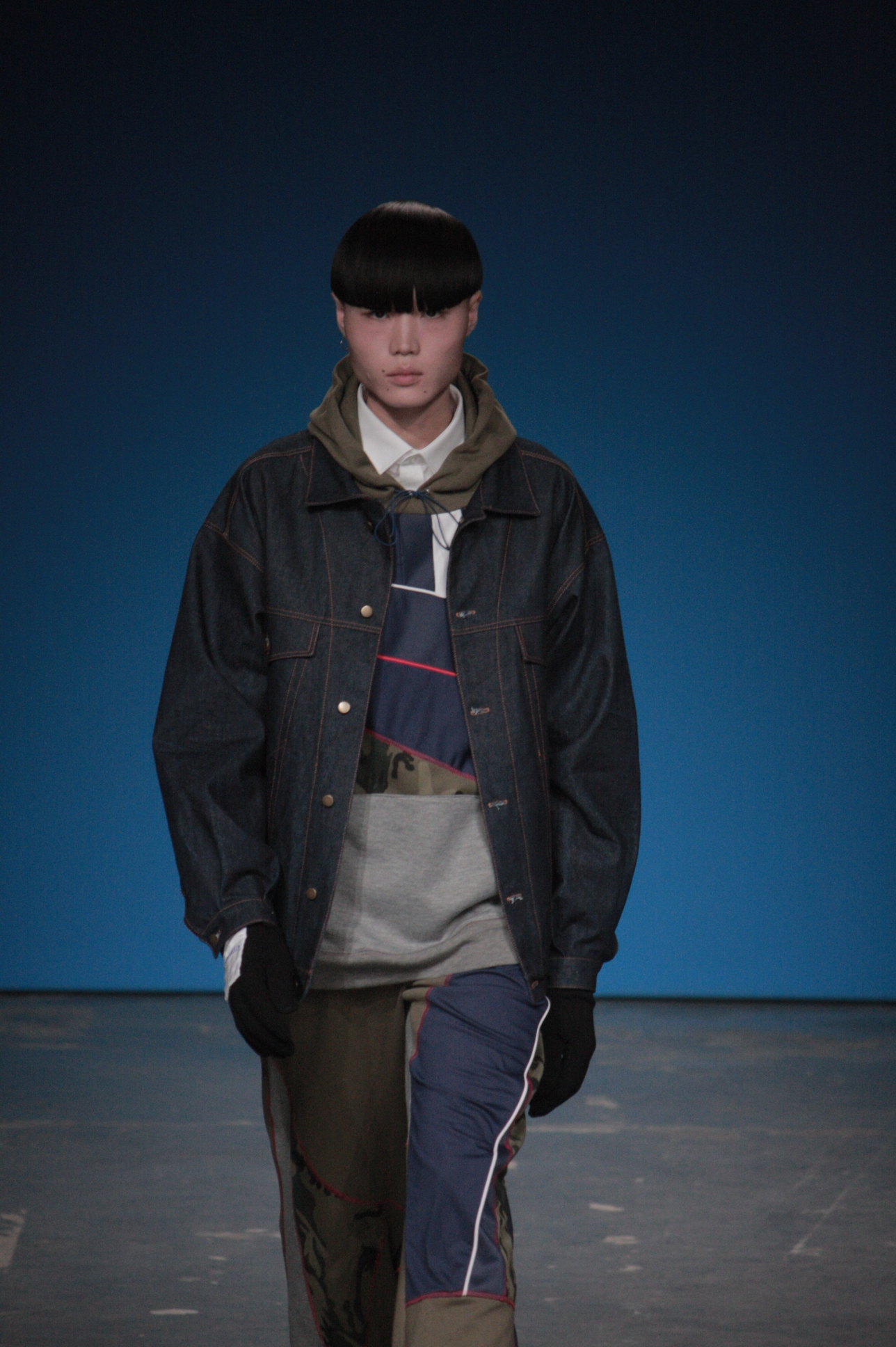
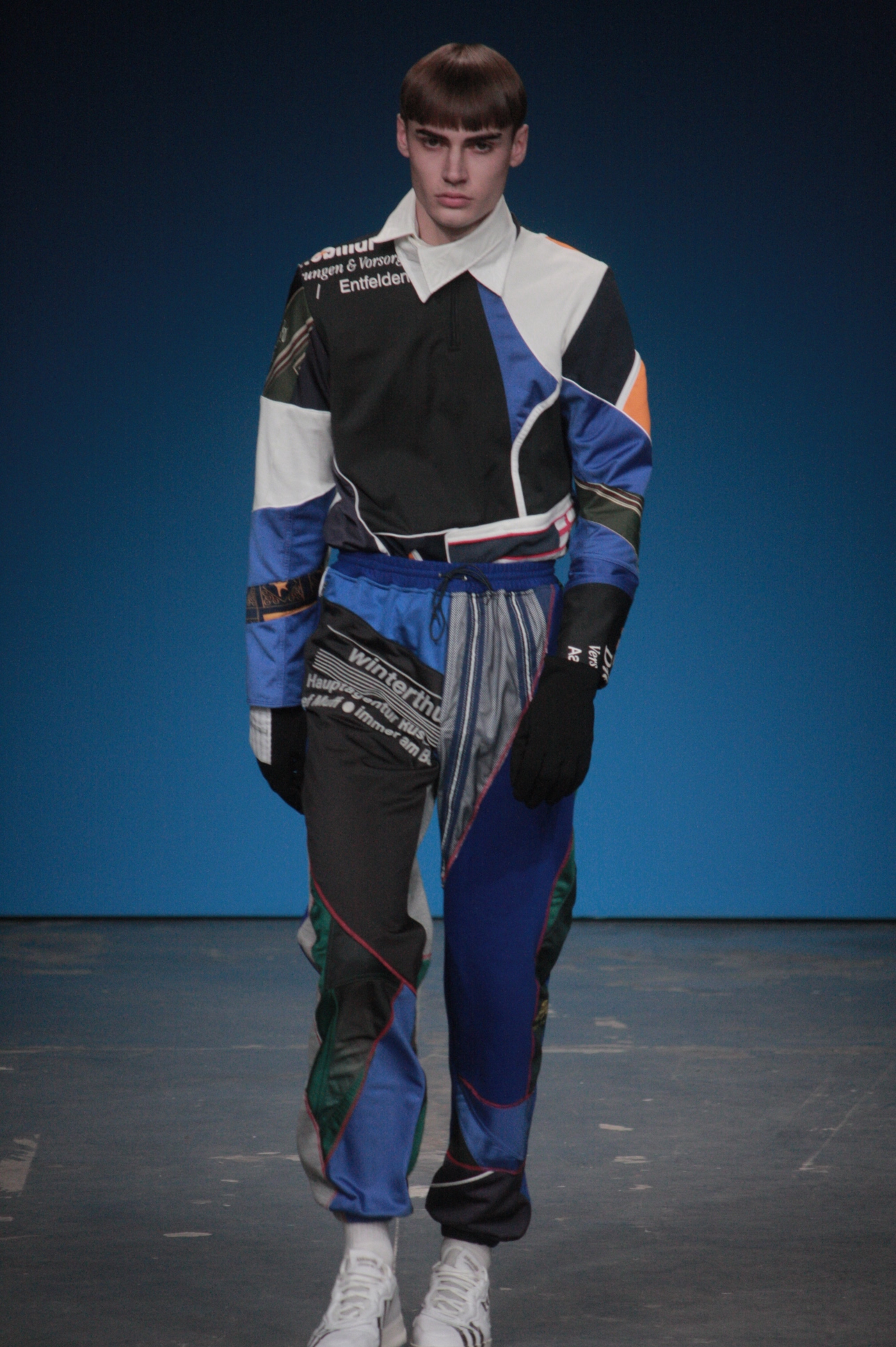
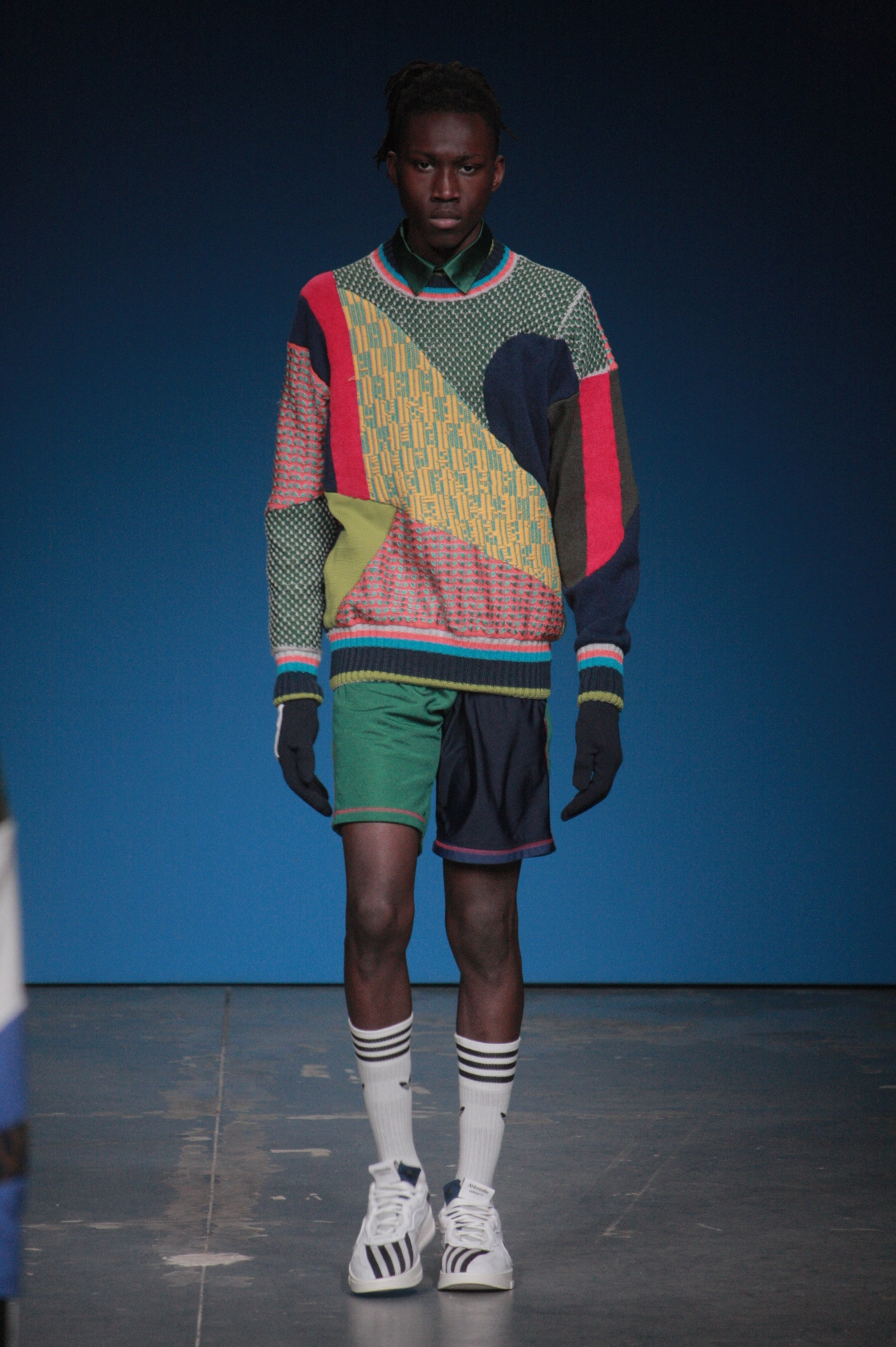
All photos by Marijo Zupanov.







